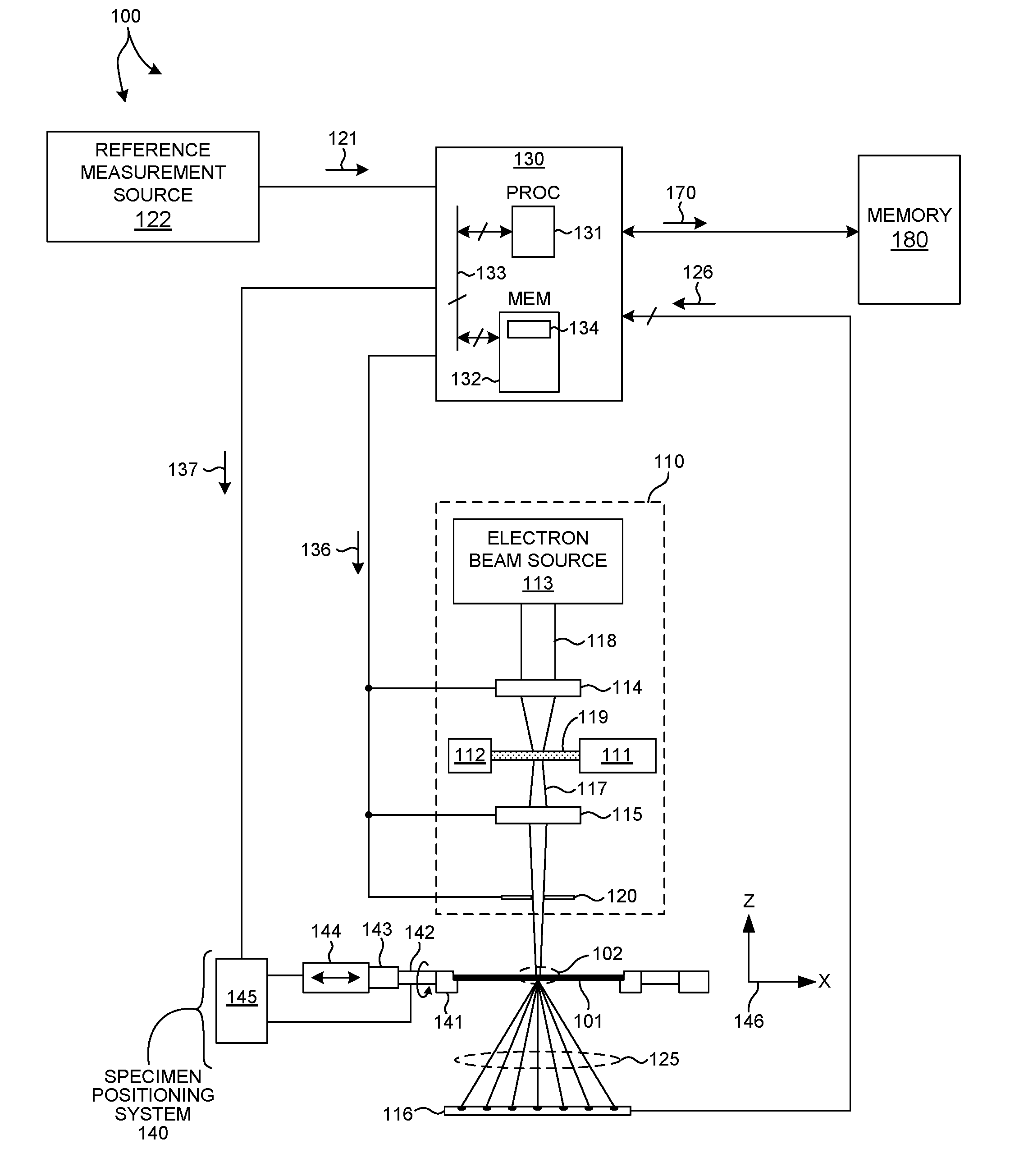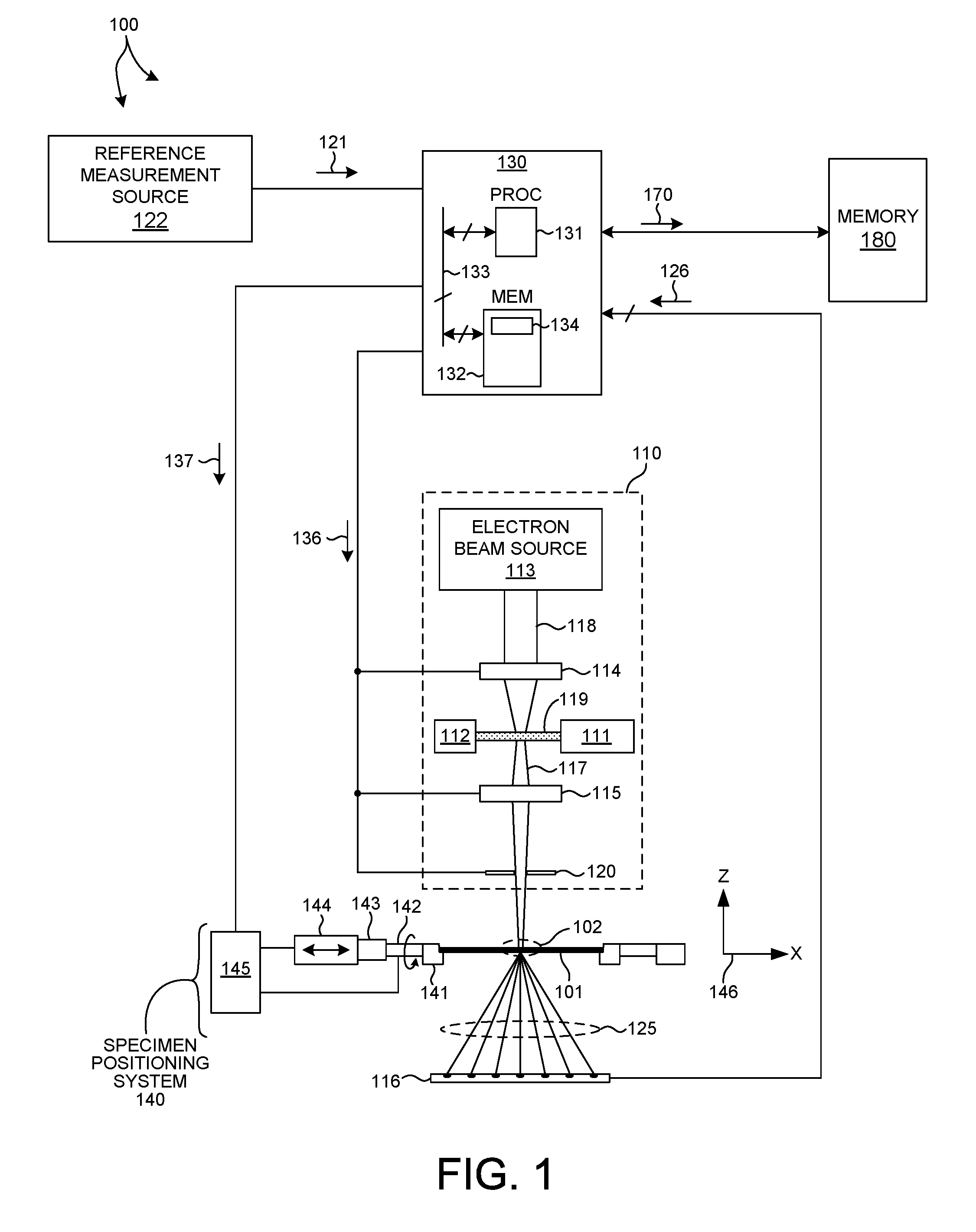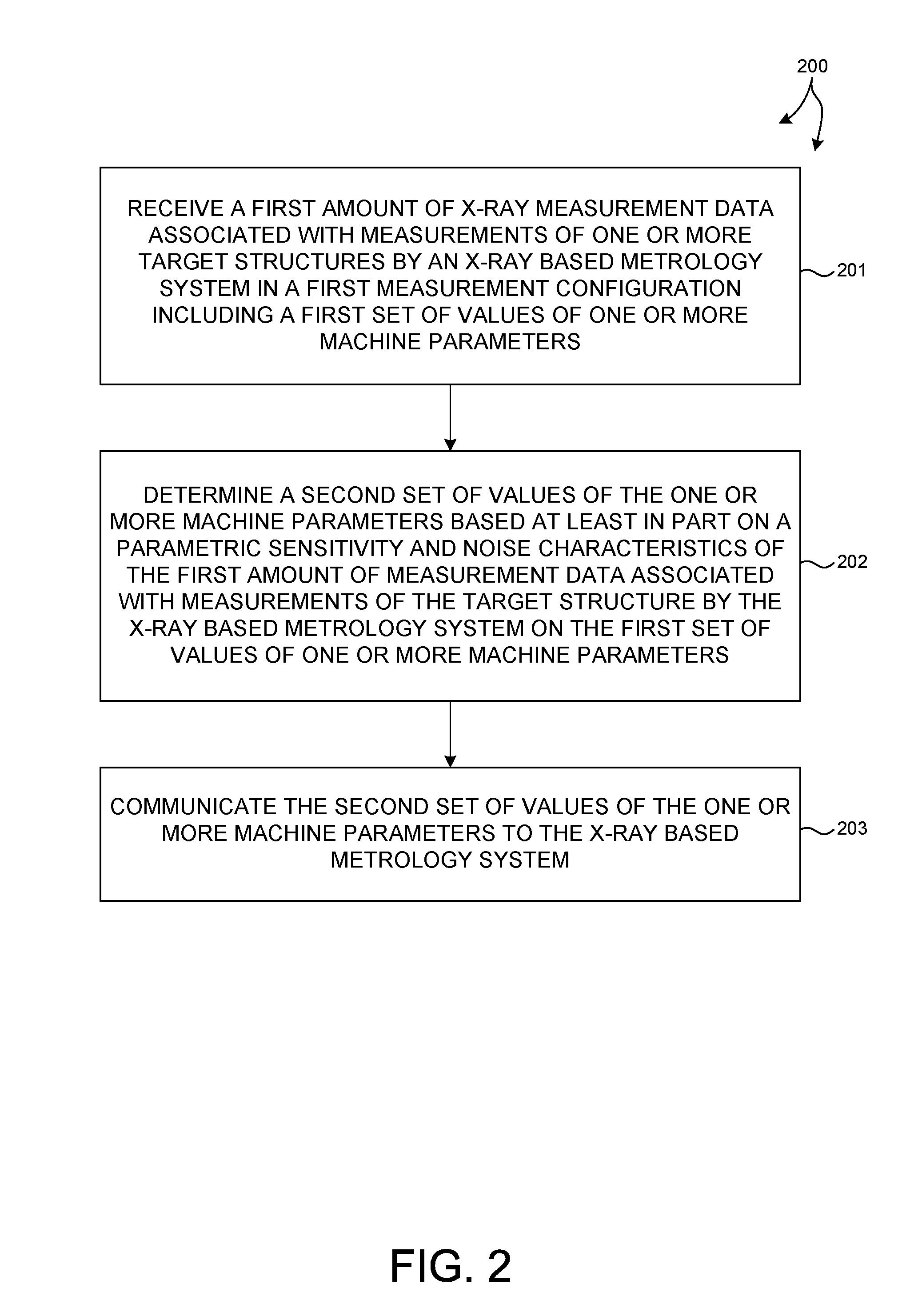Measurement System Optimization For X-Ray Based Metrology
a measurement system and metrology technology, applied in the direction of instruments, material analysis, material analysis using wave/particle radiation, etc., can solve the problems of optical radiation not being able to penetrate to the bottom layer, characterization difficulty, and characterization difficulty, so as to maximize accuracy, minimize correlation, and maximize precision
- Summary
- Abstract
- Description
- Claims
- Application Information
AI Technical Summary
Benefits of technology
Problems solved by technology
Method used
Image
Examples
Embodiment Construction
[0024]Reference will now be made in detail to background examples and some embodiments of the invention, examples of which are illustrated in the accompanying drawings.
[0025]Methods and systems for optimizing measurement system parameter settings of an x-ray based metrology system are presented. X-ray based metrology systems employing an optimized set of measurement system parameters are used to measure structural (e.g., dimensional characteristics of structures and films, etc.), material (e.g., material composition), and process characteristics (e.g., lithography focus and dosage) associated with different semiconductor fabrication processes with greater precision and accuracy.
[0026]In general, x-ray metrology techniques discussed herein (e.g., metrology based on x-ray diffraction and x-ray scattering) are indirect methods of measuring physical properties of a specimen under inspection. In most cases, the measured values cannot be used to directly determine the physical properties ...
PUM
 Login to View More
Login to View More Abstract
Description
Claims
Application Information
 Login to View More
Login to View More - R&D
- Intellectual Property
- Life Sciences
- Materials
- Tech Scout
- Unparalleled Data Quality
- Higher Quality Content
- 60% Fewer Hallucinations
Browse by: Latest US Patents, China's latest patents, Technical Efficacy Thesaurus, Application Domain, Technology Topic, Popular Technical Reports.
© 2025 PatSnap. All rights reserved.Legal|Privacy policy|Modern Slavery Act Transparency Statement|Sitemap|About US| Contact US: help@patsnap.com



